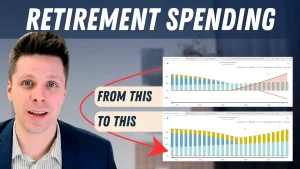I’ve previously written about my hatred for buying depreciating assets (The Joys of Purchasing a Vehicle), so I don’t get overly excited when it comes time to buy a new car. I can appreciate all the features that come with a new vehicle, but I don’t like losing 10% of the car’s value as soon as I drive off the lot. Perhaps one day we’ll be able to use Elon Musk’s Hyperloop to get around, but for the time being, we still have to deal with car salesmen.
I’ve also previously made the case that you shouldn’t pay down your mortgage or car loan from your investments IF (that’s a big IF) you can expect your investments to grow at a higher rate than the rate on your debt. If your investments are growing at 8%, there’s no sense in withdrawing them to pay down your car loan at 3%, especially if you can afford the payments on your car.
As with any rule of thumb, it’s best to follow this advice most of the time. But in some instances, it’s better to go against the grain.
The scenario
Let’s assume you’re in the market for a new vehicle that will cost you $50k. You’ve done an excellent job saving throughout your life and are set with an RRSP, TFSA, and non-registered account all earning 8% on a yearly basis. You’re now retired and ready to splurge. So, you head down to the dealership where they offer you a loan on your dream car at 4%. You’re happy with the rate because it’s lower than what’s available on your Home Equity Line of Credit (HELOC) which is sitting at 4.2%. Conventional wisdom would say to take the 4% loan as you are getting the best value in terms of interest rate, but not so fast.
The strategy
With some shrewd tax planning on your part, you can get a loan for your dream car at an even lower rate.
Step 1: Withdraw $100k from your non-registered investments and purchase the car.
You don’t want to stop after Step 1 though, because you’ve just lost 8% growth on $100k. That’s thousands of dollars you could have earned on the $100k you withdrew.
Step 2: Borrow $100k on your HELOC and replenish your non-registered investments.
You might be thinking, “Marc, why did we do all of this?” At the end of the day, I have $100k owing on my HELOC. I could have taken the loan offered to me by the dealership at a lower rate.
The Payoff
From a tax perspective, the details in Step 2 are where this strategy comes together. If you read it carefully, you aren’t borrowing $100k to purchase the car, but rather to replenish your non-registered account. This means you are borrowing to invest and from a tax perspective this allows you to write off the interest on your debt. Assuming you are in a 40% tax bracket, your net cost of borrowing just fell to 2.52%. You’ve just saved thousands of dollars in interest over the course of the loan merely by restructuring your debt more efficiently.
Wrapping it up
If you have non-registered investments available, this is a strategy you should review before purchasing your next vehicle. Even if you already have a car loan, this strategy can still be implemented as long as you have an avenue to replenish your non-registered account. As always, an extra dollar in YOUR pocket is better than in someone else’s.



